Welcome to South Georgia, a mesmerising sanctuary renowned for its abundant wildlife, snow-capped mountains, and awe-inspiring landscapes.
Isolated in the Atlantic, this remote location serves as a refuge for an extraordinary array of creatures, from king penguins to Antarctic fur seals.
As part of the British Overseas Territory, South Georgia provides a huge visual contrast to the white and blue of Antarctica for those patient enough to voyage here.
Here’s how you can make the most of seeing and learning about South Georgia wildlife.
South Georgia Tours with WildFoot Travel
Biodiversity in and around South Georgia has been profoundly affected by human activity. A combination of pollution, the invasion of non-native species, and climate change present an ongoing threat to many species that call the island their home.
As such, we are happy to be sponsored for this article by WildFoot Travel, a sustainable travel organisation dedicated to wildlife conservation and the protection of the environment. They have supported such organisations and campaigns as the Worldwide Fund for Nature, the Wildfowl and Wetlands Trust, Save the Albatross, and the South Georgia Habitat Restoration Project.
Visit WildFoot Travel’s website for a full list of tour options – from pole-to-pole.
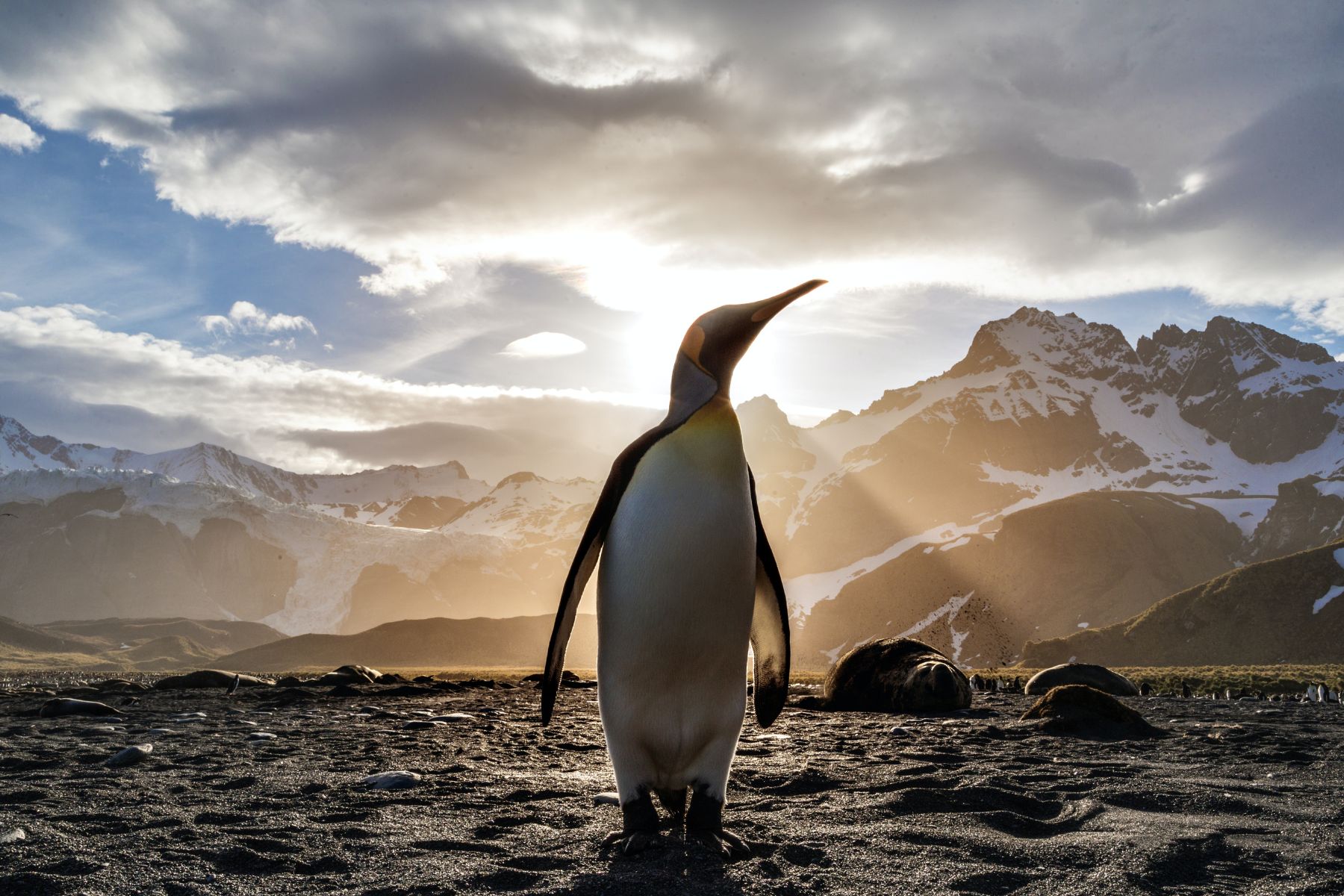
How to Travel to South Georgia
The main way to reach these islands is by an expedition vessel. WildFoot Travel run a variety of voyages to the region, including The Ultimate Antarctic expedition which visits Antarctica, South Georgia and the Falkland Islands following in the footsteps of Sir. Ernest Shackleton.
The voyage begins in Ushuaia, Argentina, sailing out through the Beagle Channel, named in honour of Charles Darwin who first explored the region in 1833-34 aboard HMS Beagle.
The ship then crosses the infamous Drake Passage, a rite of passage for any expeditioner.
Then, it’s time to visit the Antarctic Peninsula, where Shackleton’s ship, Endurance, became stuck in the ice. Today, you can stand on beaches bustling with gentoo penguin rookeries and visit the penguin post office. Zodiac cruises can thrill you through a maze of icebergs and you can see crabeater seals basking on ice floes.
From there (conditions allowing), it’s time to visit Elephant Island in the South Shetland Islands, an extremely desolate and exposed point where Shackleton’s men survived for 4 ½ months, while he continued onwards to South Georgia in the tiny James Caird, a journey of 800 miles. It’s regarded as one of the greatest small boat journeys ever completed.
Finally, you reach South Georgia, the ultimate marine wildlife destination, featuring haunting whaling history, and the burial place for Shackleton at Grytviken.
The last stage includes the Falkland Islands, a paradise for photographers, walkers & hikers.
Voyages depart in the austral spring and summer months, typically from the end of October through to March.
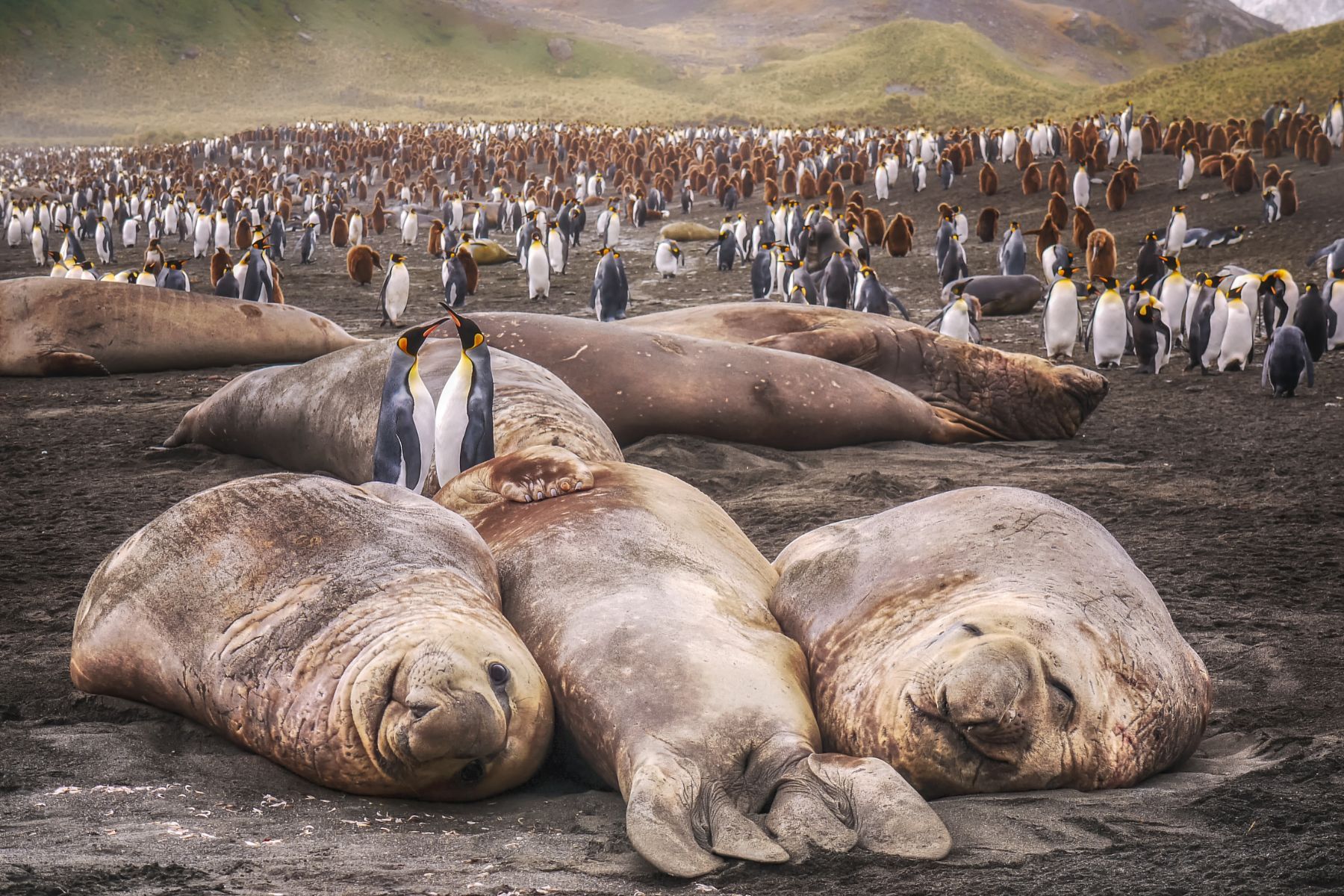
Popular Wildlife Spots in South Georgia
As your South Georgia cruise ship navigates the icy seas, the sight of Salisbury Plain or Fortuna Bay, filled with tens of thousands of king penguins, is nothing short of breathtaking.
Other landing sites like Prion Island and St Andrews Bay are teeming with life. The king penguin chicks at St Andrews Bay and the wandering albatrosses at Prion Island are a photographer’s delight, providing ample opportunities for taking photos while gasping at the arctic beauty along with your fellow passengers onboard the expedition.
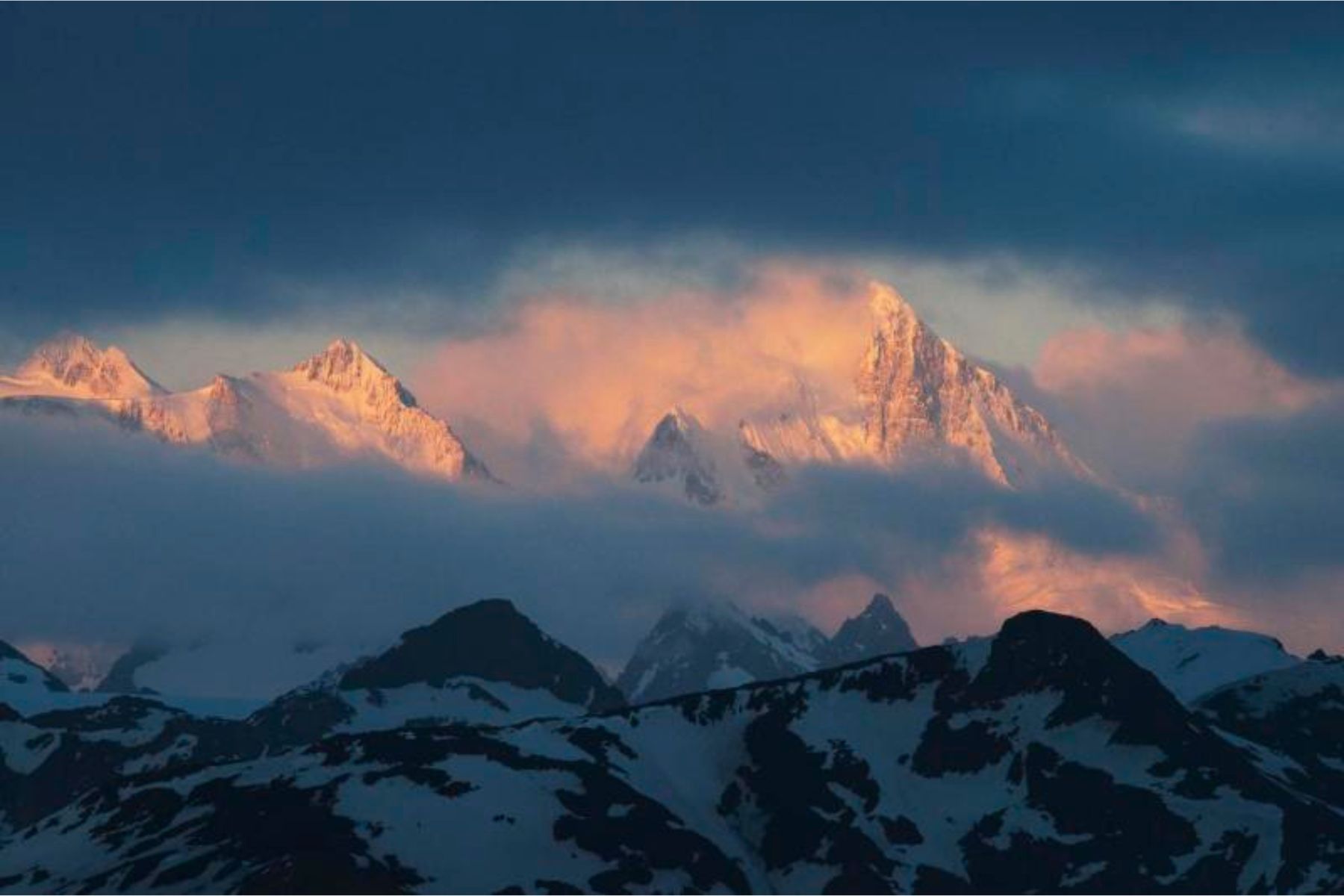
When to Visit South Georgia
The best time to visit South Georgia is Oct-Mar, during the austral Spring & Summer months. Being so far south, you’ll experience long daylight hours offering endless opportunity for exploration. It’s during this early season that the weather is friendly, daylight stays longer, and the symphony of nesting birds fills the air.
With a biennial breeding pattern, whenever you visit South Georgia you’ll always see the King Penguins through their entire lifecycle – from the brown, thinly-downed chicks to the resplendent adults with their amber patches.
It’s an absolute feast for any wildlife aficionado, but remember, the weather here loves to keep you on your toes, so pack smart!
A Beginner’s Guide to South Georgia Wildlife
South Georgia is truly a sanctuary of biodiversity, as evidenced by the wide range of species that call this place home. The island’s native fauna is dominated by a variety of birds and marine mammals, each adapted to survive the harsh conditions of the Southern Ocean.
Here are the main species you should be looking for:
Penguins: The Feathered Inhabitants of South Georgia
The most iconic birds of South Georgia are the penguins, with four species calling the island home:
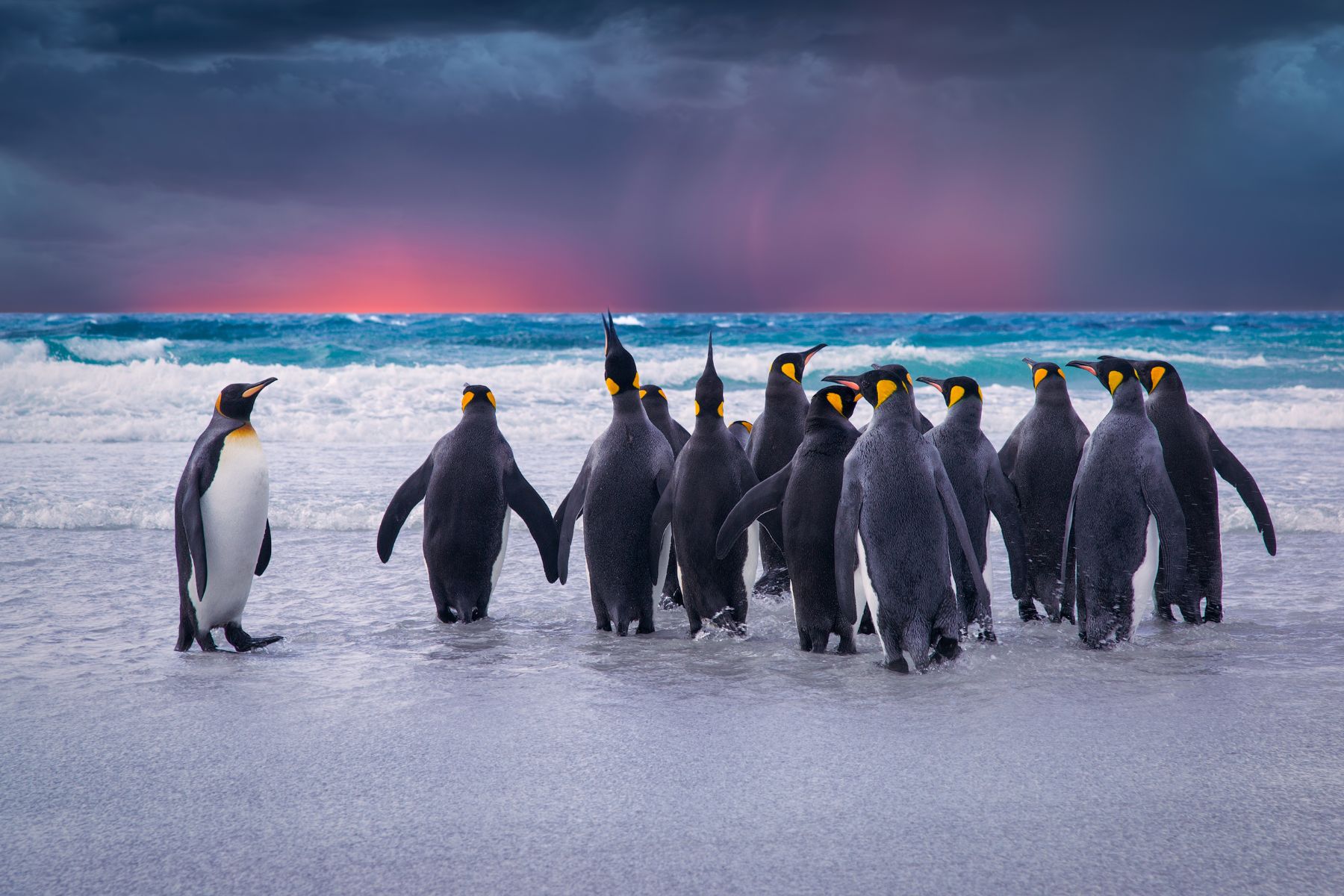
King Penguins
In the heart of this flourishing ecosystem, king penguins proudly claim a starring role. Their distinguished orange highlights and streamlined figures make them a delightful spectacle. With a remarkable count of over 450,000 breeding pairs residing on the island, South Georgia proudly plays host to one of the planet’s largest king penguin settlements. For the best places to see them, check out Gold Harbour, St Andrew’s Bay, and Salisbury Plain.
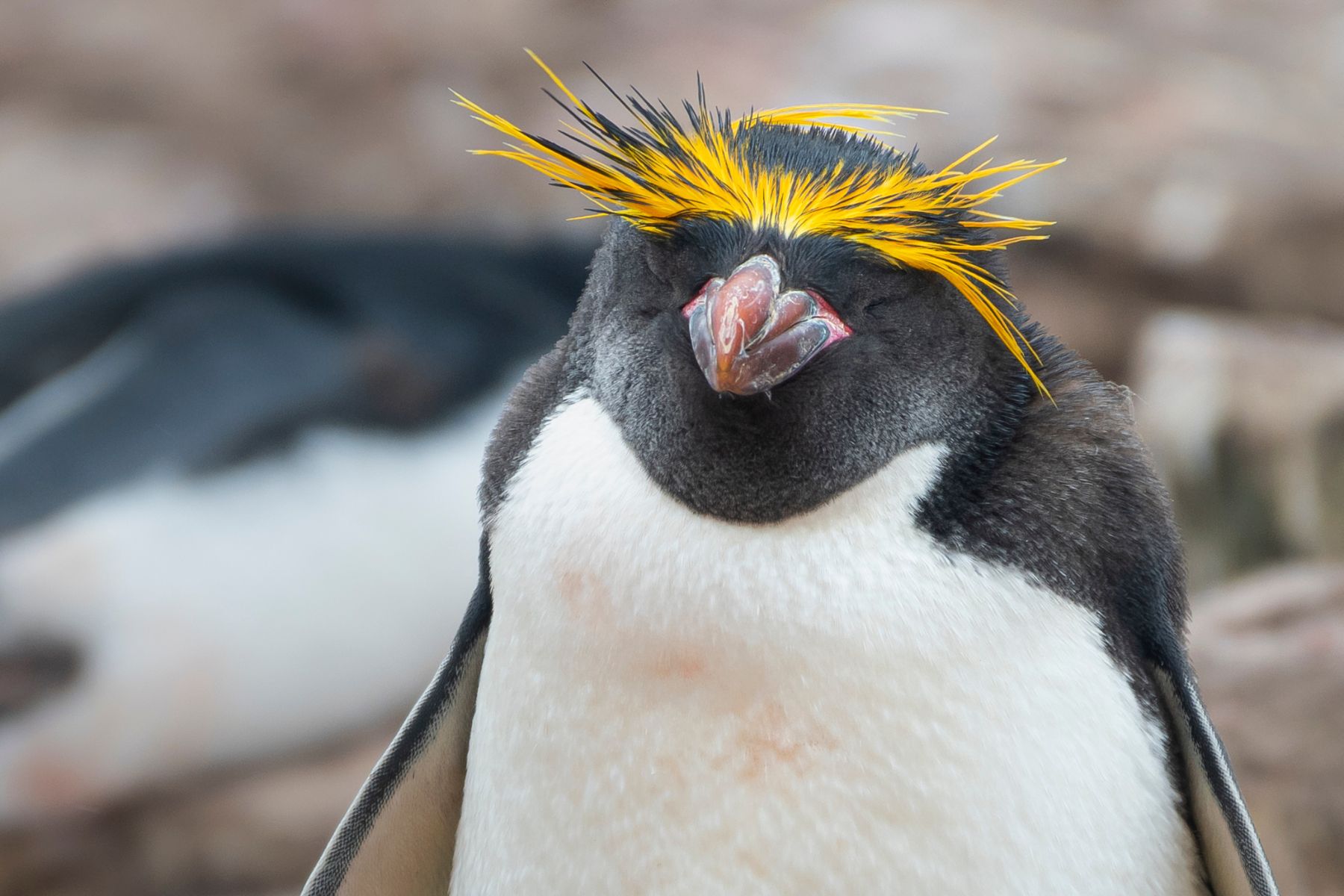
Macaroni Penguins
Adding to the wildlife tapestry, the flamboyantly crested Macaroni penguins mark their presence as the most populous of all penguin species, with South Georgia anchoring a significant portion of their global population.
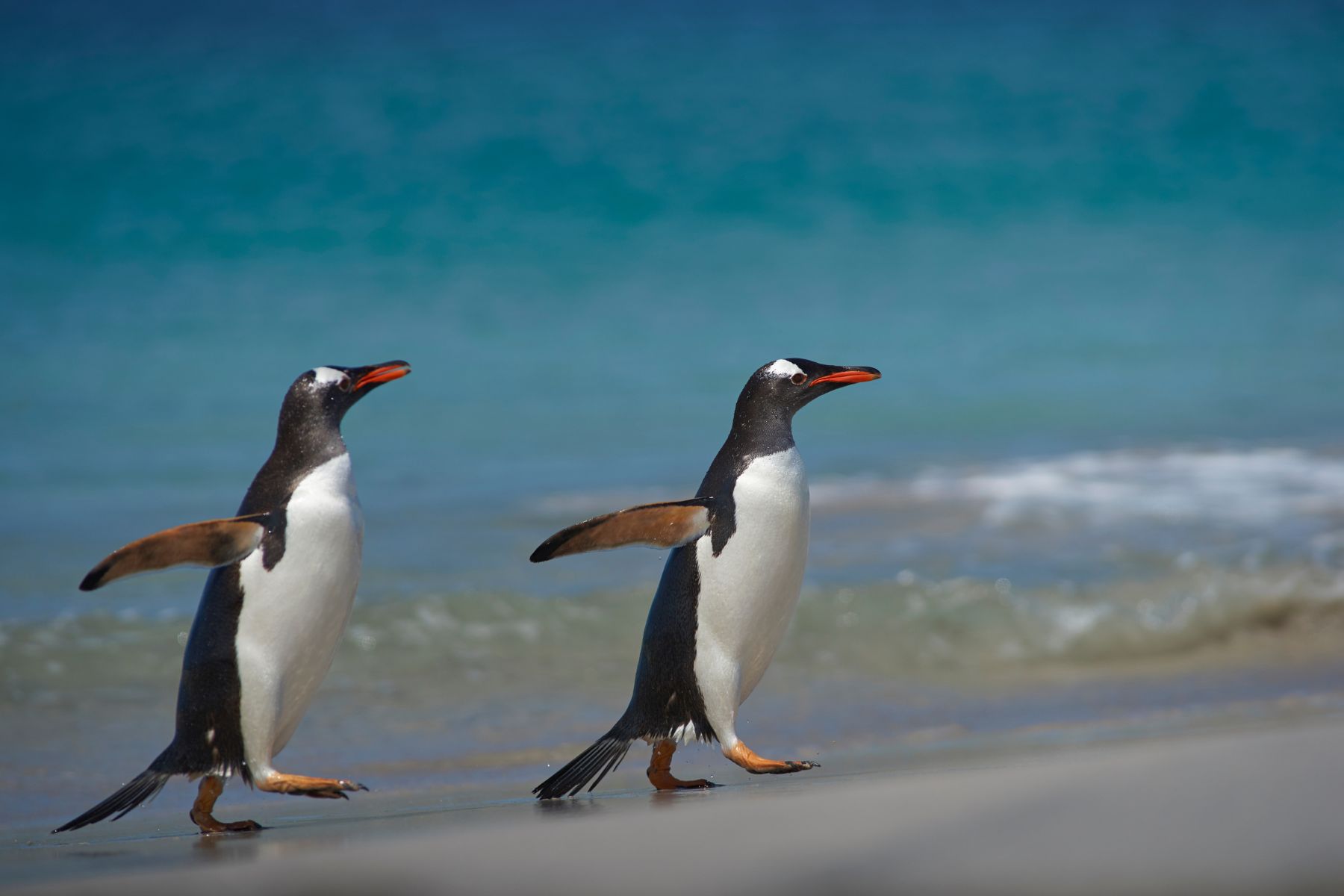
Gentoo Penguins
Then we have the Gentoo penguins, their distinct white patches around the eyes adding another layer of diversity to the landscape. Their energetic antics and impressive underwater speed make them a joy to behold.
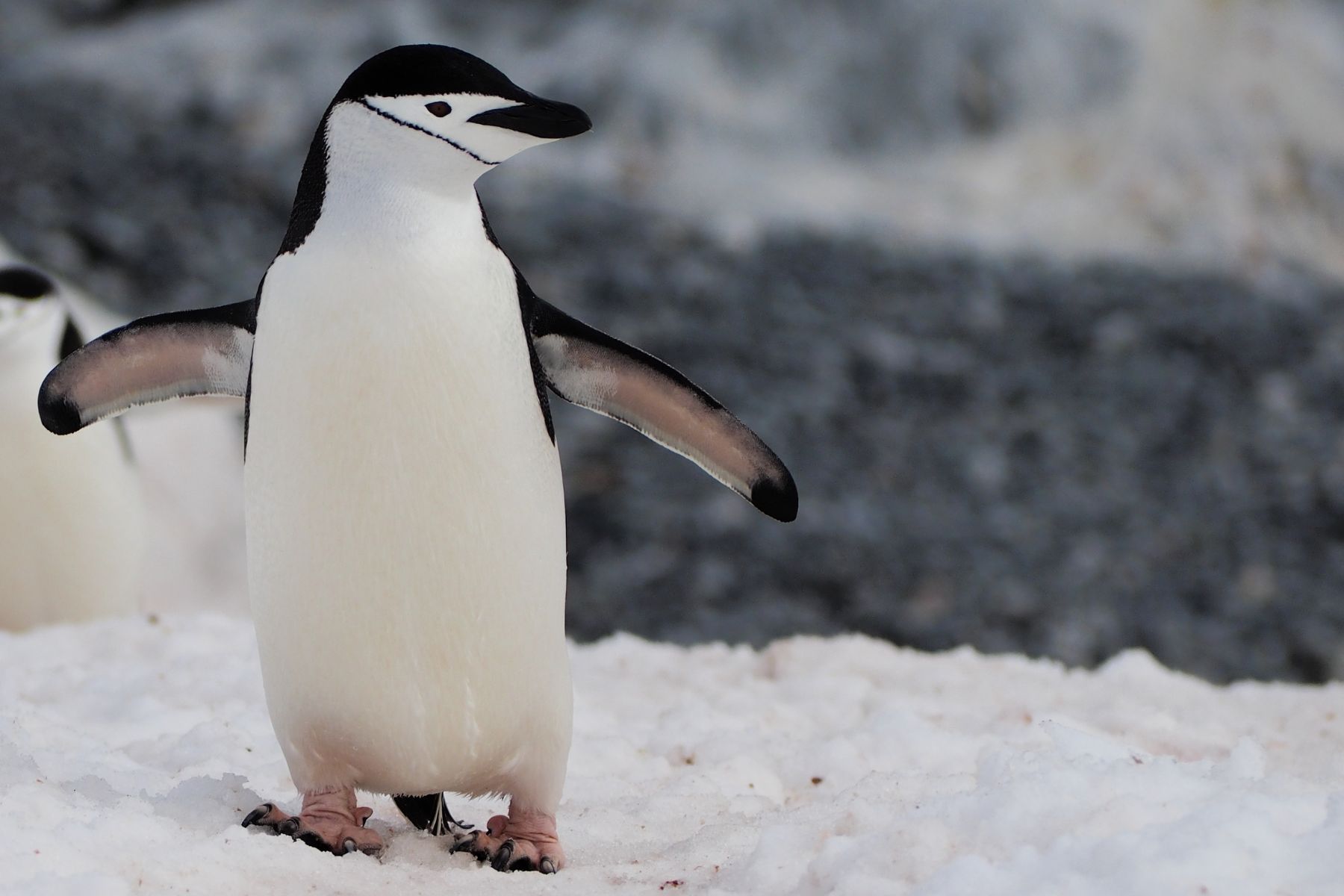
Chinstrap Penguins
Of course, we can’t complete the list without acknowledging the chinstrap penguins. With their unmistakable white stripes and black chinstraps, these penguins add an element of dynamism to any scene they grace.
Seals: A Splendid Sight in South Georgia
If penguins are the avian royalty of South Georgia, then seals are unarguably the mammalian kings.
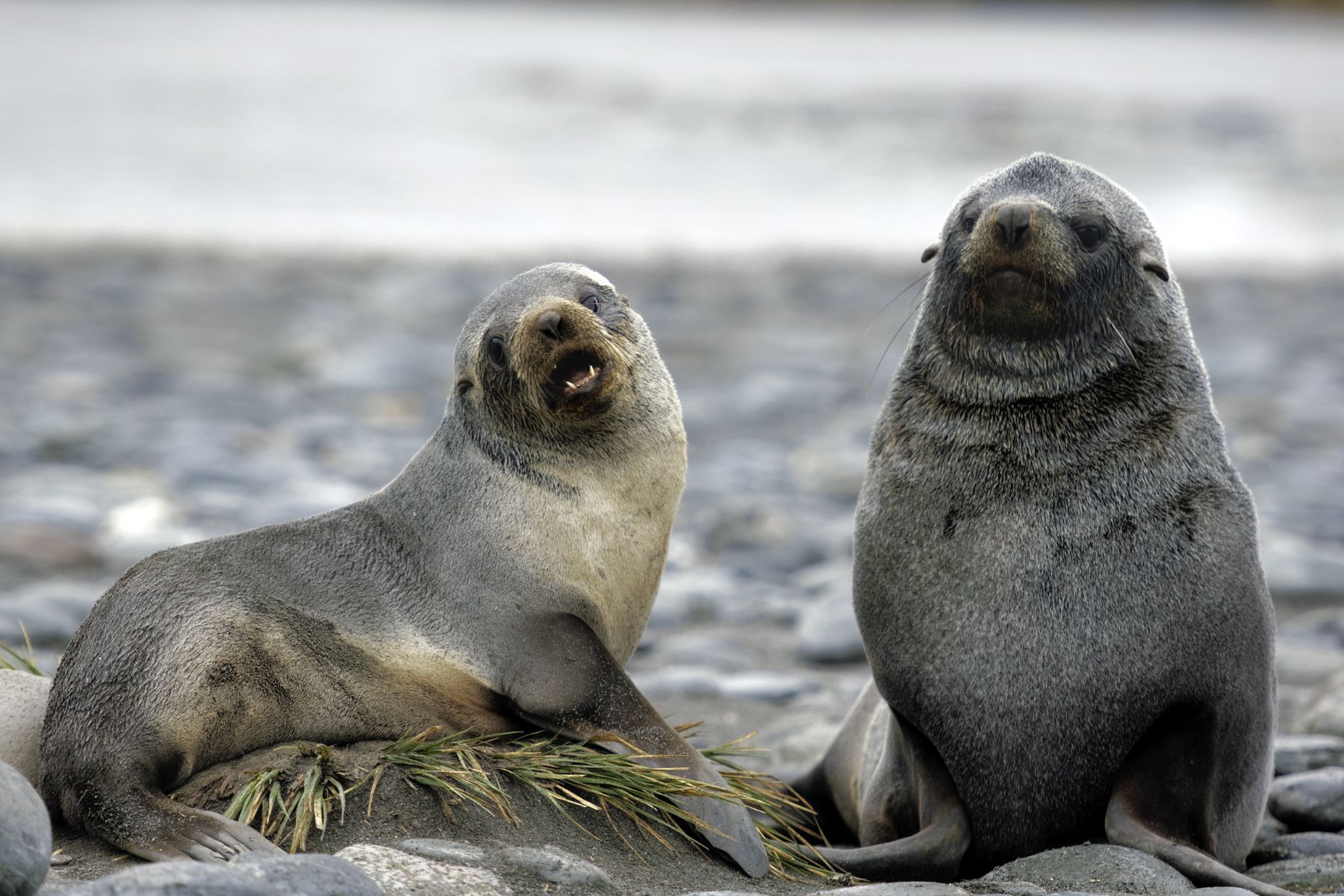
Antarctic Fur Seals
This species has an extraordinary presence on the island. Here, you’ll find almost 95 per cent of the world’s population. These seals are a crucial thread in the intricate wildlife of South Georgia. You’ll see them virtually everywhere on the island, from the tough, rocky coastlines to the soothing, sandy beaches.
During the breeding season, the males, distinguishable by their formidable size and dense manes, are particularly noticeable. They preside over territories and gather harems of females, staging a memorable wildlife spectacle.
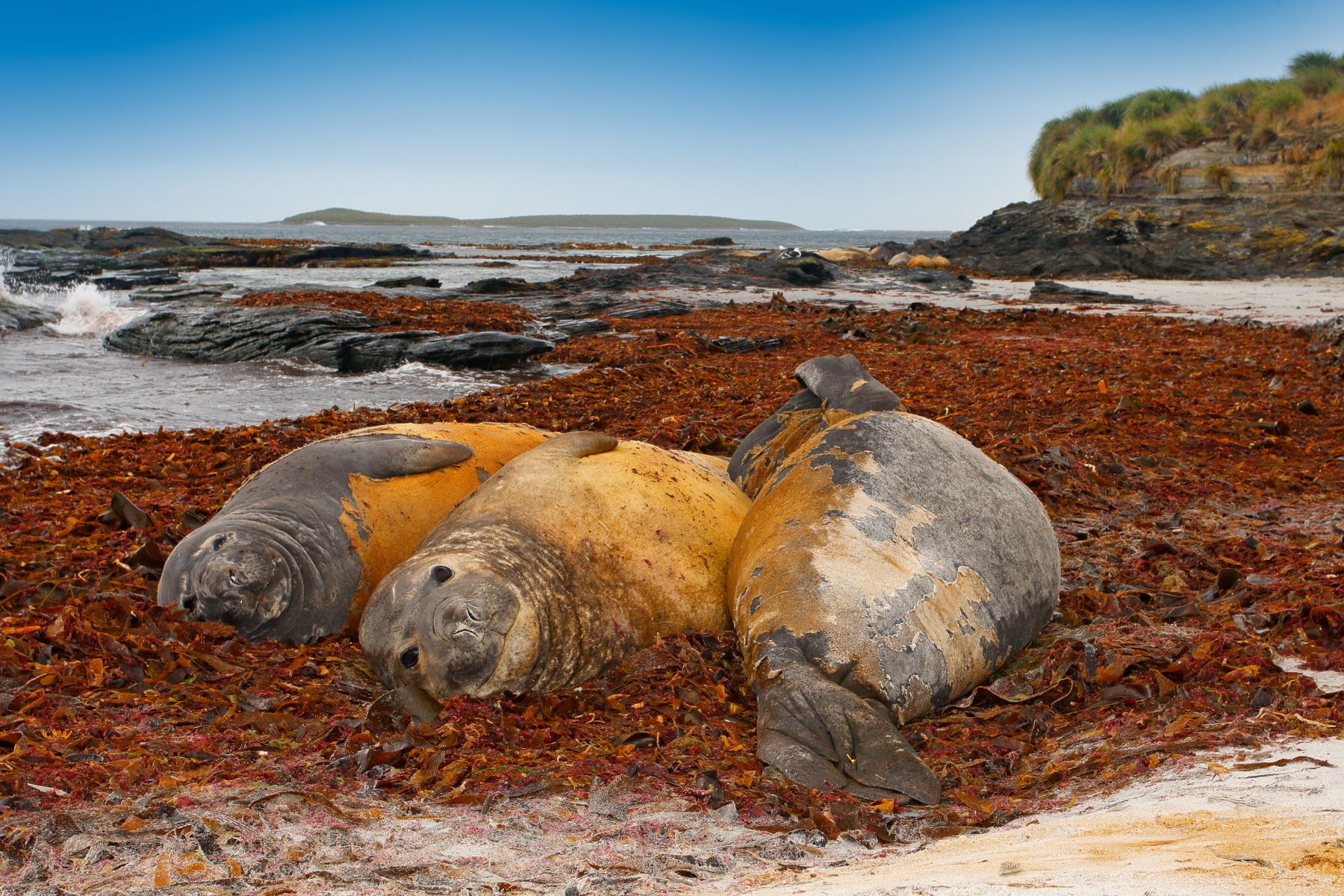
Elephant Seals
A more ponderous and equally fascinating character that calls South Georgia home is the elephant seal. Recognised by their extended, trunk-like noses, these massive seals hold the title of the world’s largest. Coming across these leviathans lazily basking on the beaches, often stacked upon each other, is a sight that underlines the extraordinary wildlife character of South Georgia.
Seabirds: Soaring High in South Georgia’s Skies
Step into the wildlife drama of South Georgia and notice the teeming sky. A myriad of species of birds, in their magnificent variety, bring life to this breathtaking dance. Their chirping and squawking enliven the air, a constant reminder of the island’s pulsing biodiversity.
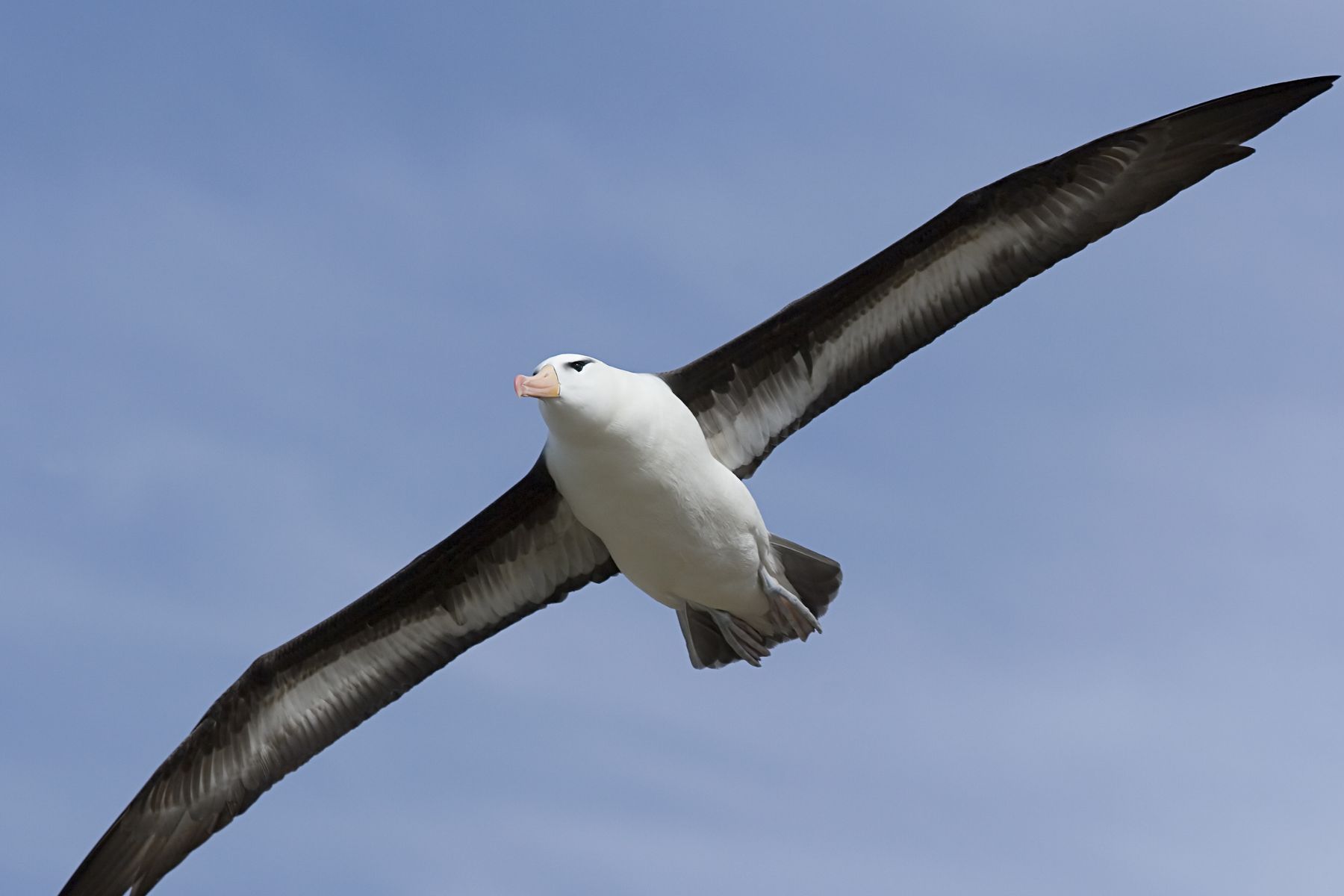
Albatrosses
Imagine the sight of albatrosses, their incredible wings spanning the sky, their beaks telling tales of sea journeys. They are the stars of this airborne spectacle, especially the wandering albatrosses – the biggest of them all. For an absolute albatross extravaganza, Prion Island off the coast of South Georgia is the place to be.
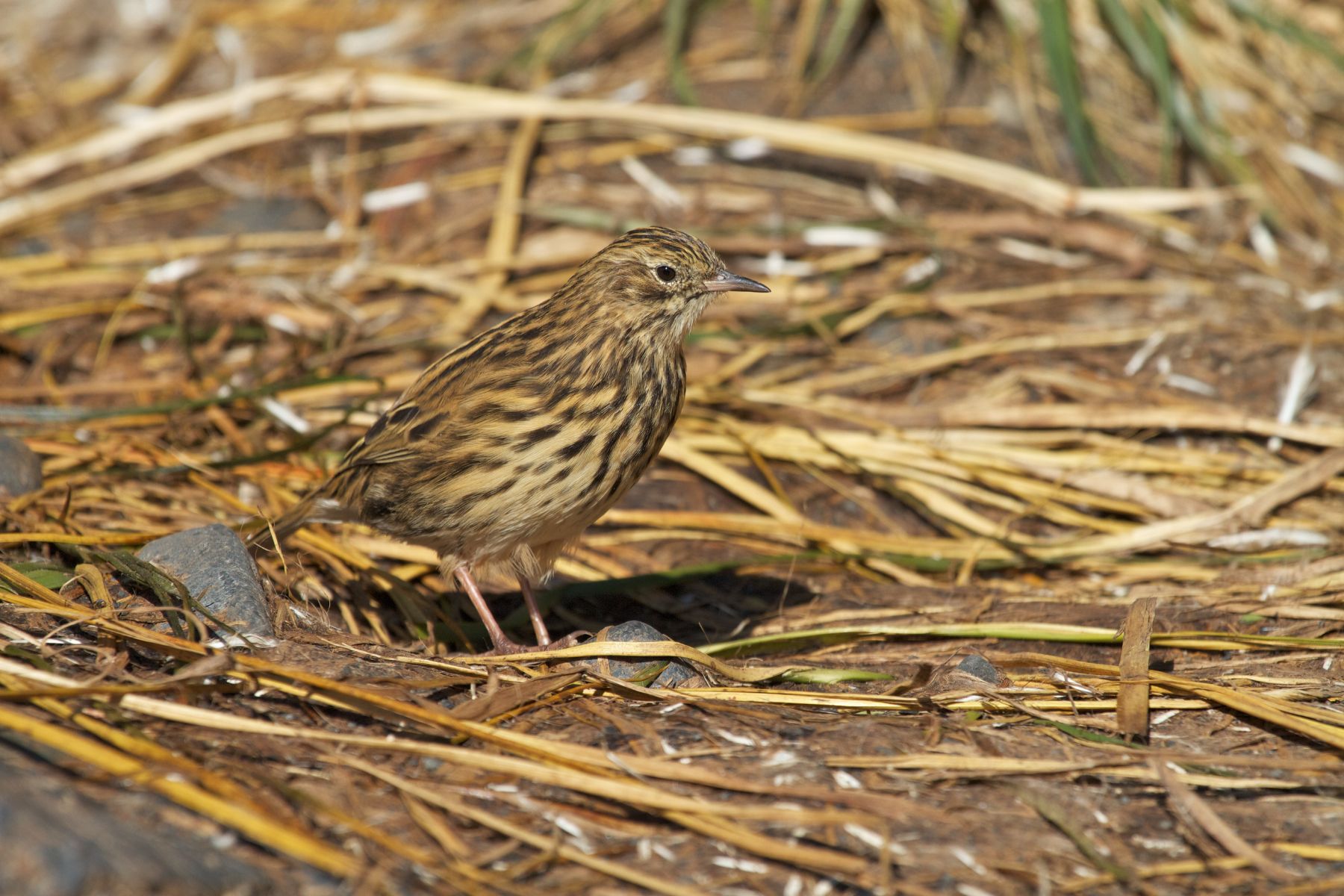
South Georgia Pipits
The endemic South Georgia pipit holds the unique distinction of being the only songbird native to not only South Georgia, but all of Antarctica. The petite, brown bird is readily identifiable by the charming melody it lends to the island’s soundscape – a series of high-pitched ‘pipit’ notes. Its delicate features and mellifluous song make it a delightful part of the island’s vibrant ecosystem.
It’s survival is a conservation success story. Rats, introduced by humans, once threatened their population. After what was at the time the largest rat eradication project ever, the South Georgia pipits’ population is bouncing back.
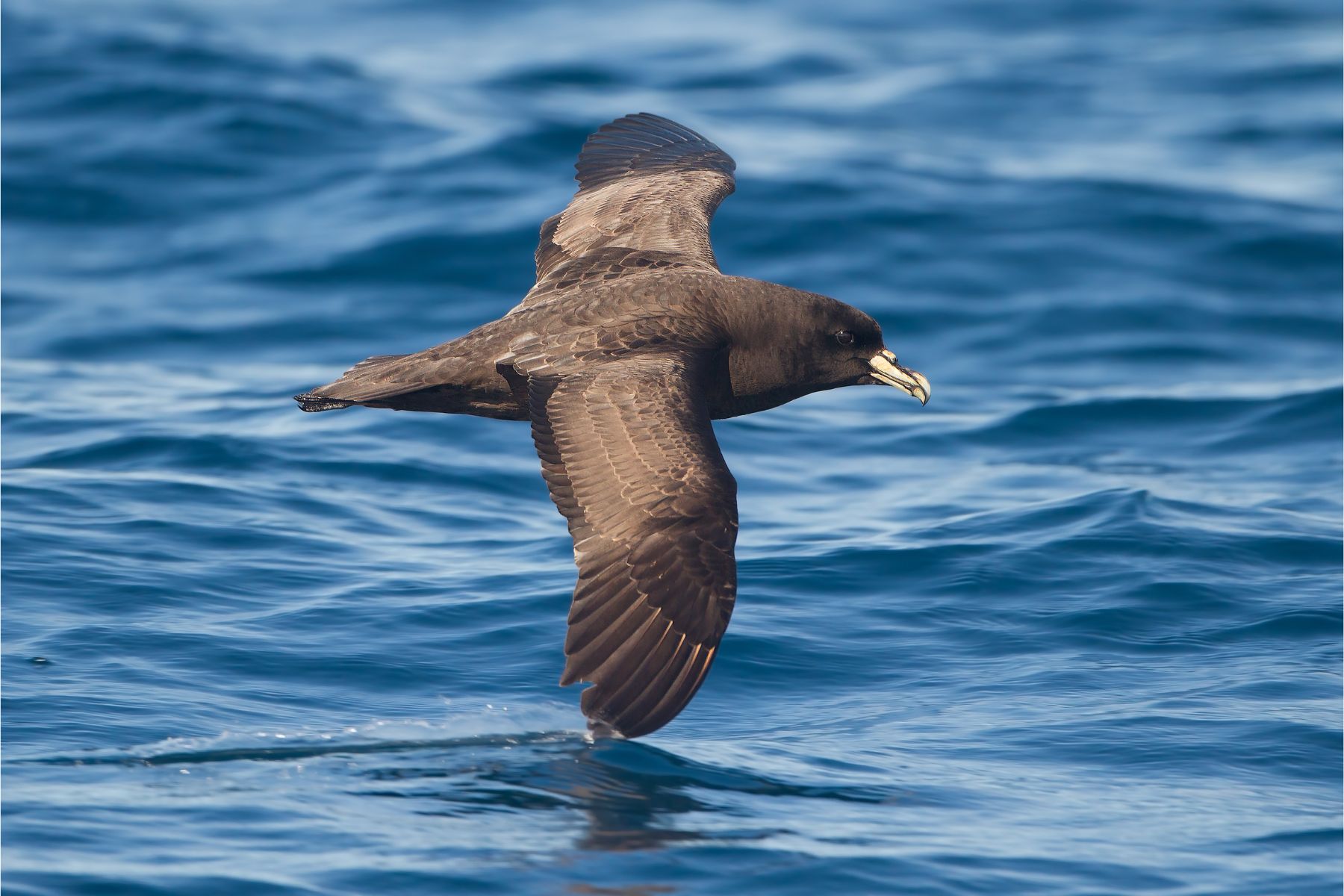
Petrels
Petrels swoop and dart over the ocean, their flight a thrilling frenzy. Watch the white-chinned petrels and Antarctic prions glide just above the water, their wings almost caressing the waves.
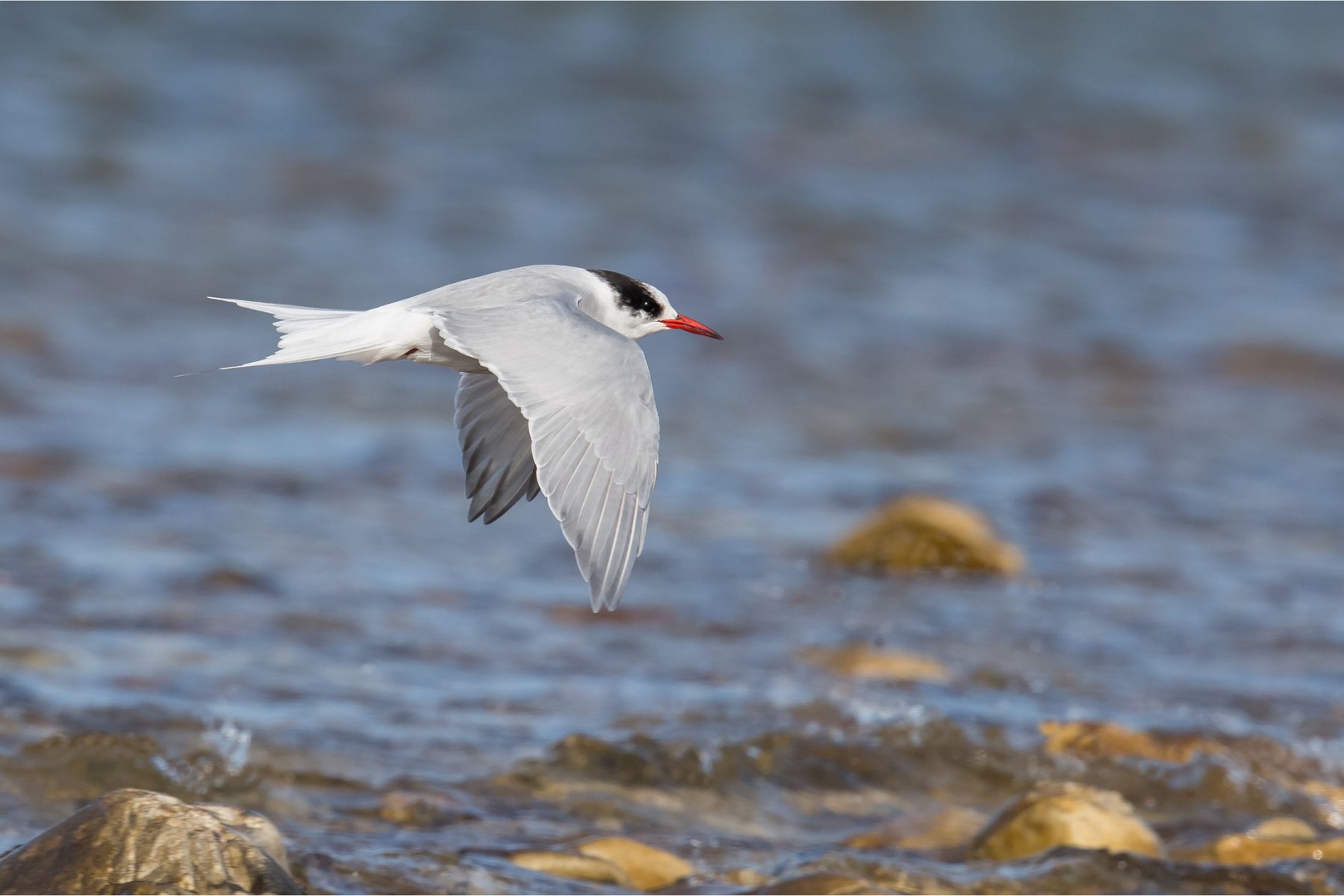
Shags, Sheathbills, Terns
And let’s not forget the other avian wonders: the South Georgia shags, the sheathbills, and the different species of terns. Whether nesting on rocky ledges or etching arcs in the sky as they hunt, their presence infuses the South Georgian landscape with a distinctive charm.
Whales: The Peak of Your Adventure
The profound, nutrient-dense waters of South Georgia don’t just play host to a menagerie of seabirds and seals; they also serve as a refuge for an array of whale species. At one point, whales had been hunted close to extinction but recent conservation efforts have seen a 90% recovery rate.
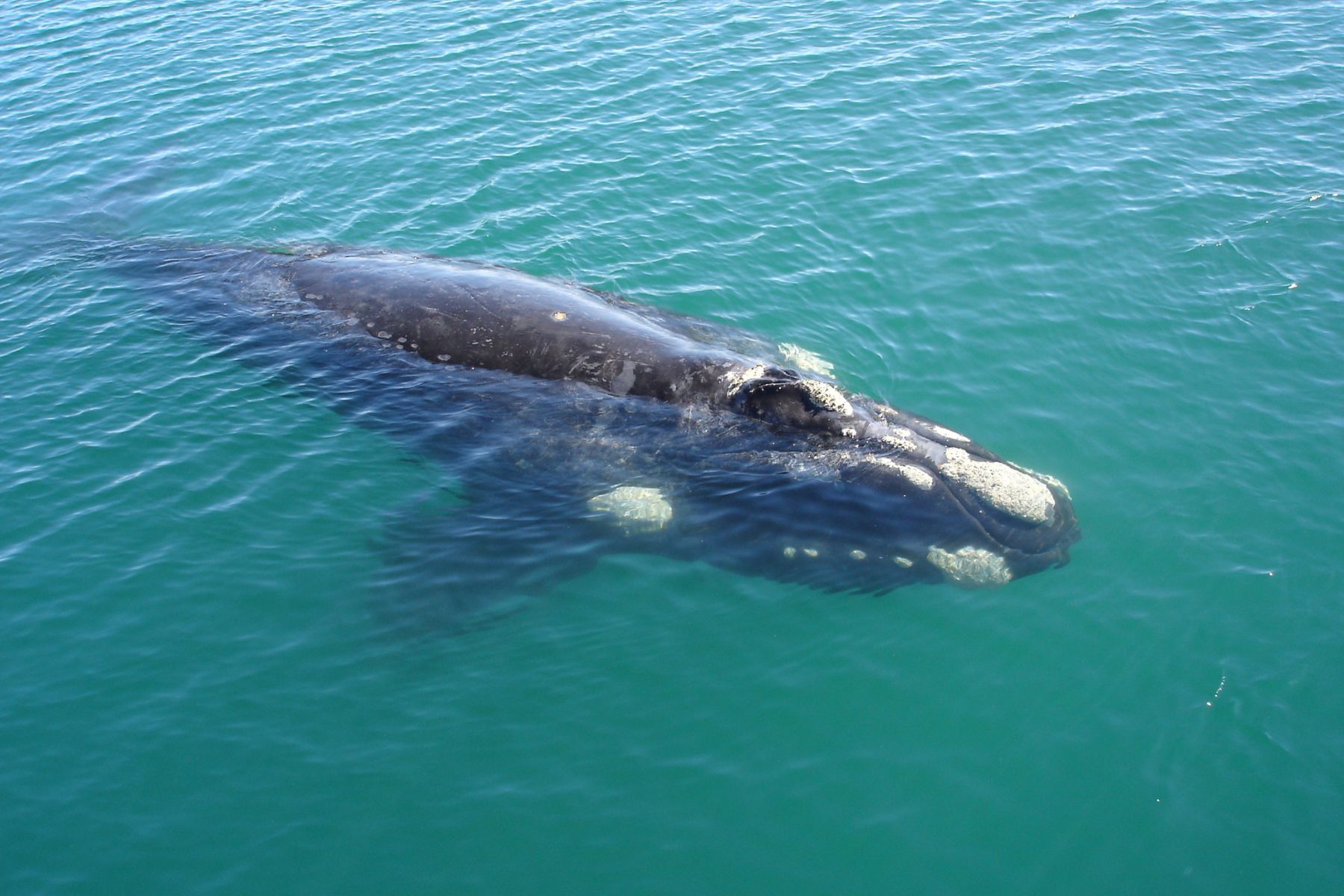
Southern Right Whales
You’ll often spot southern right whales gracing the waters – their name a legacy from the whaling era, where their slow pace and ample oil supply made them the “right” whaling target. Today, these amiable titans enjoy protection and are often seen performing breaches and tail-slaps in South Georgia’s waters.
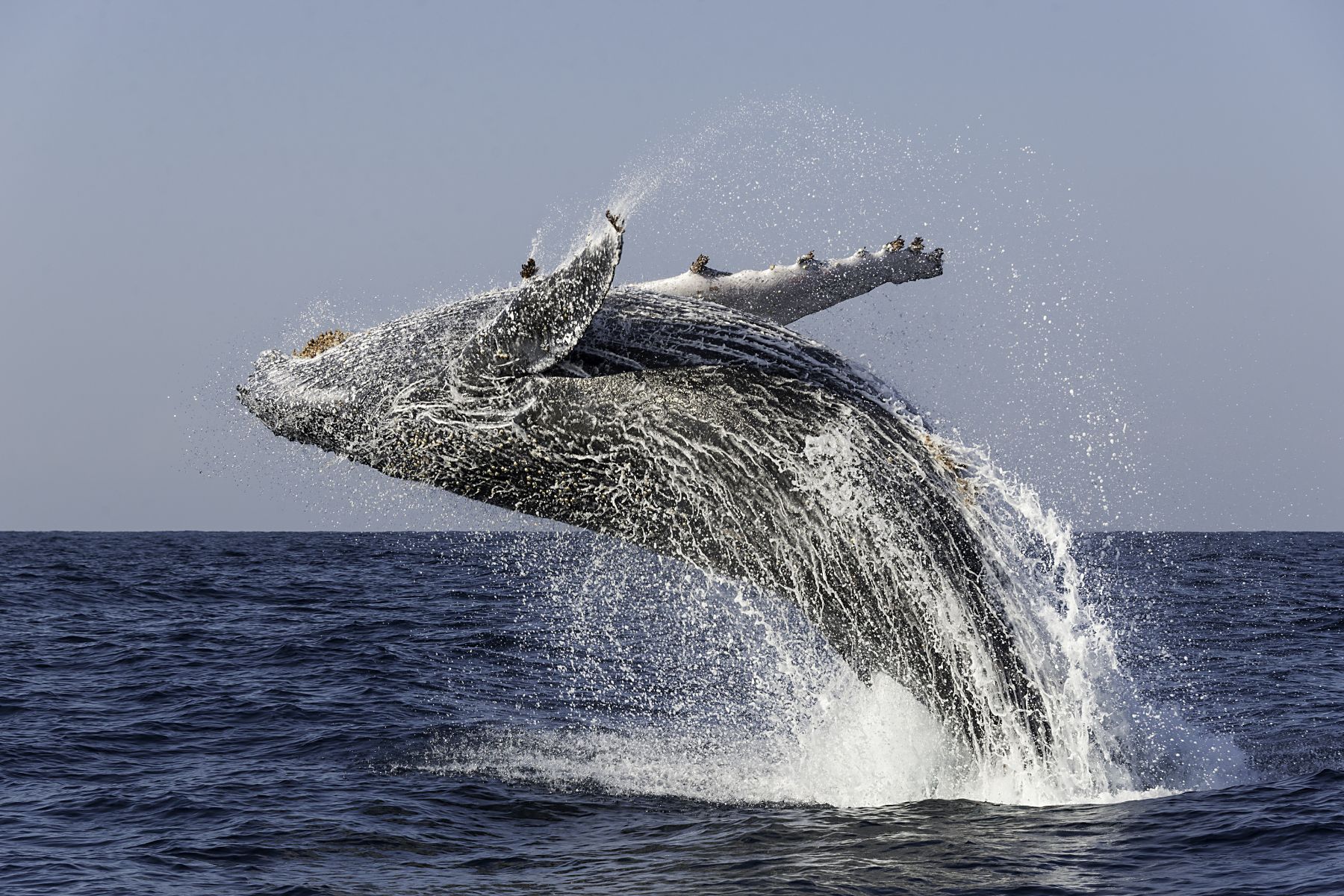
Humpback Whales
Humpback whales are another familiar sight. With their unique body form, extended pectoral fins, and a habit of theatrical breaches, they offer amazing wildlife spectacles—especially during migration season.
Spectacled Porpoise
Adding to the mystique of the waters is the elusive spectacled porpoise, a seldom seen and thus less understood small cetacean. Their dramatic black-and-white skin and distinctive “spectacles” around their eyes are their notable identifiers.
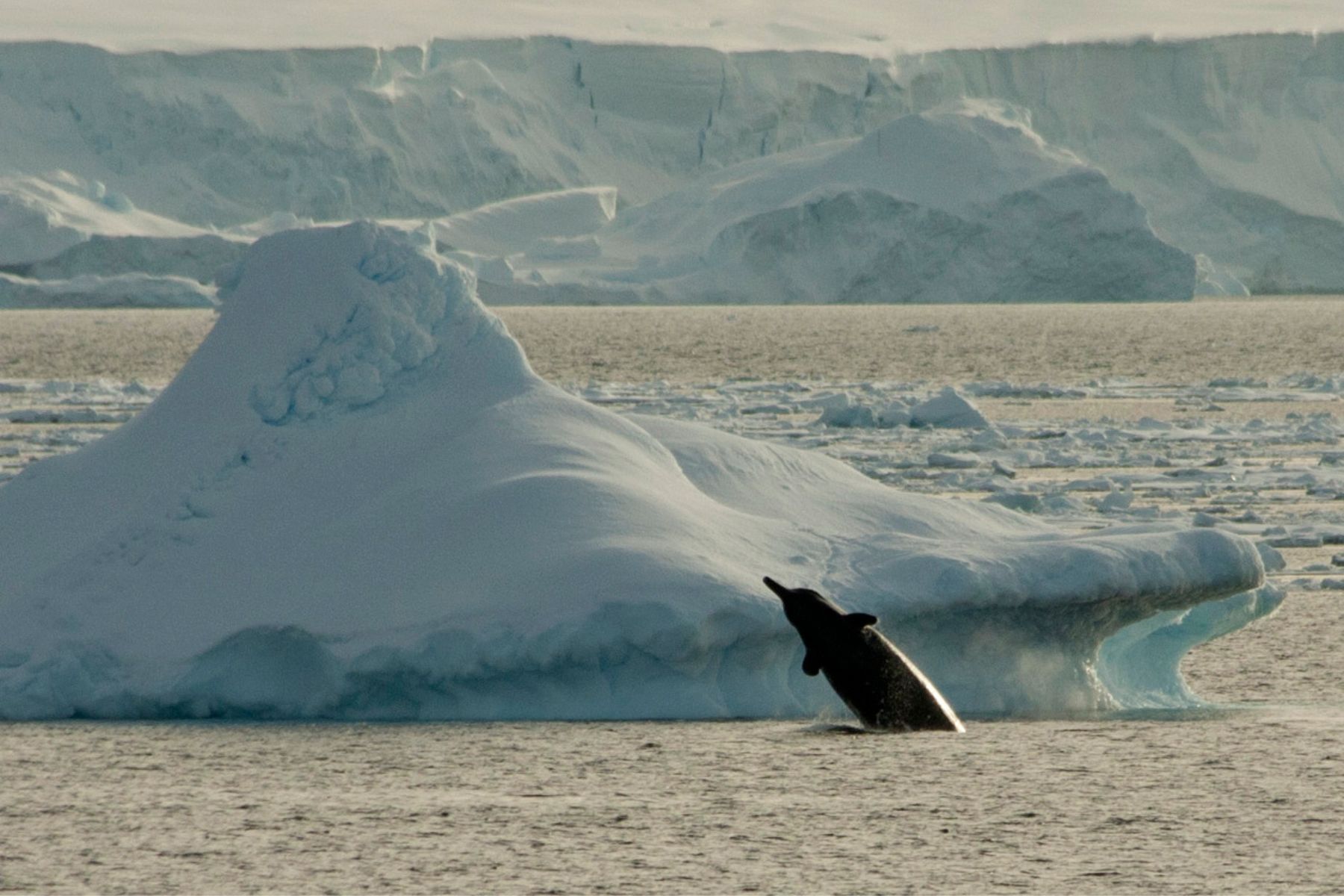
Arnoux’s Beaked Whale
Rumoured to frequent South Georgia’s waters is the enormous Arnoux’s beaked whale, a creature known for its deep dives and elusive nature. Spotting one is considered a rare treat, given their preference for deep offshore waters and their inconspicuous surface behaviour.
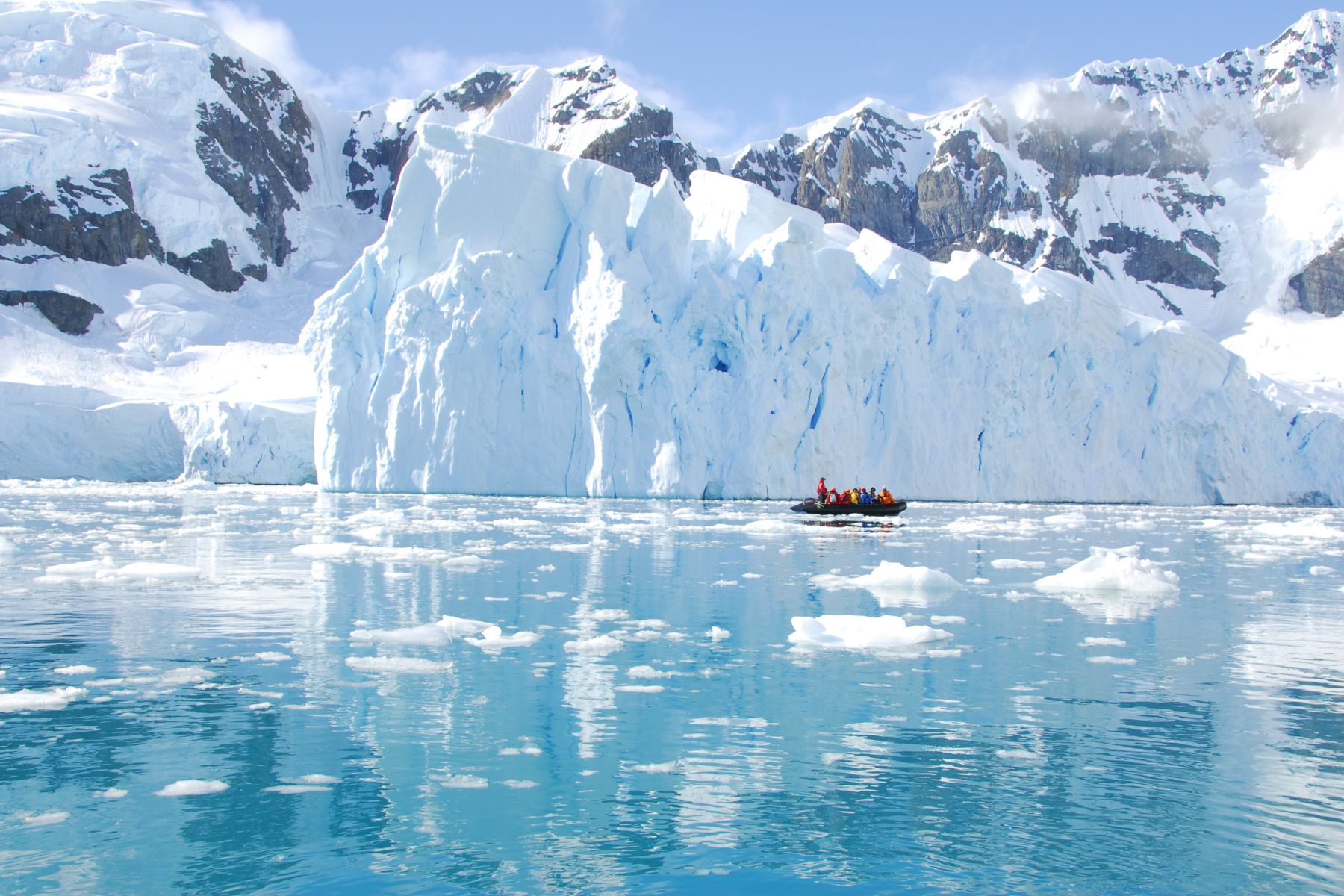
Other Great Wildlife Spotting Points in the Southern Hemisphere
If you want to go beyond South Georgia, there are other exceptional wildlife destinations worthy of exploration in the Southern Hemisphere.
Falkland Islands
To the west of South Georgia Island lies the Falkland Islands, a rugged archipelago known for its birdlife, including albatrosses and penguins. Its grassy plains and chilly beaches form the ideal natural habitat for these creatures. Also, its capital, Port Stanley, is definitely worth exploring for its history.
Elephant Island
Named for its populations of southern elephant seals, this is a remote, windswept island off the coast of Antarctica. It serves as an important rookery for these seals, providing them with a safe nurturing environment.
South Shetland Islands
The journey continues to remote areas like the South Shetland Islands, where the Antarctic convergence occurs, marking a significant increase in marine biodiversity. Here, bird watchers catch sight of native species like the wandering albatross flaunting their impressive wingspan against the sky.
South Sandwich Islands
This is a string of islands located to the southeast of South Georgia. They are well-known for hosting a mega colony of chinstrap penguins, with over 1 million breeding pairs. The volcanic activity of the islands is also of note, creating a unique environment for marine creatures.
Antarctic Peninsula
Finally, the Antarctic Peninsula, the northernmost part of the mainland of Antarctica, is a vital feeding and breeding ground for numerous species of penguins, seals, and whales. Its icy waters teem with krill, forming the base of a food chain that sustains an incredible abundance of life. For more information, be sure to read Tony Soper’s article on the best wildlife opportunities in the Antarctic.
Each of these locations plays a crucial role in supporting and nurturing the wildlife that calls them home. Despite their harsh conditions, these islands and peninsulas harbour a stunning variety of life, each contributing uniquely to the biodiversity of this region.
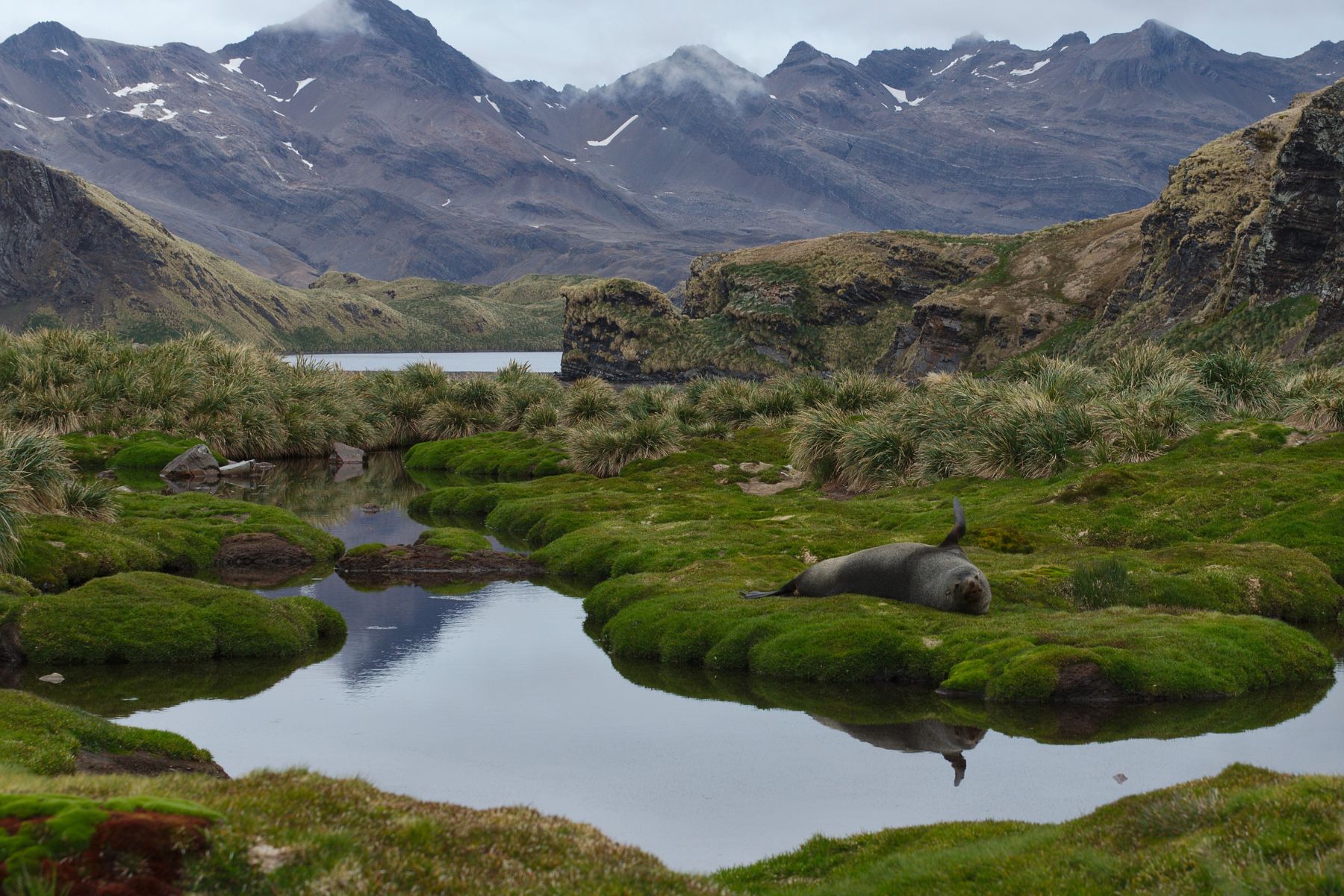
Conservation Efforts in South Georgia
While the island is home to an abundance of rare and endemic species, they are under threat from human activities and invasive species, jeopardizing the island’s biodiversity.
The South Georgia Heritage Trust and the Government of South Georgia have been instrumental in conservation efforts on the island.
Measures include implementing rigorous biosecurity measures to prevent the disruption of the ecosystem by non-native invasive species, like the white tegus, and establishing marine protected areas.
The aforementioned South Georgia pipits has become the ‘poster bird’ of much of these conservation efforts, particularly the South Georgia Heritage Trust’s Habitat Restoration project. This project saw the eradication of rats, a human-introduced invasive species to South Georgia, in 2018. Thanks to the project, threatened species like the pipits have started to recover their once dwindling populations.
As a tourist, you can also help preserve the natural ecosystem by following the rules set by the authorities, being respectful to the animals, and leaving no litter behind.
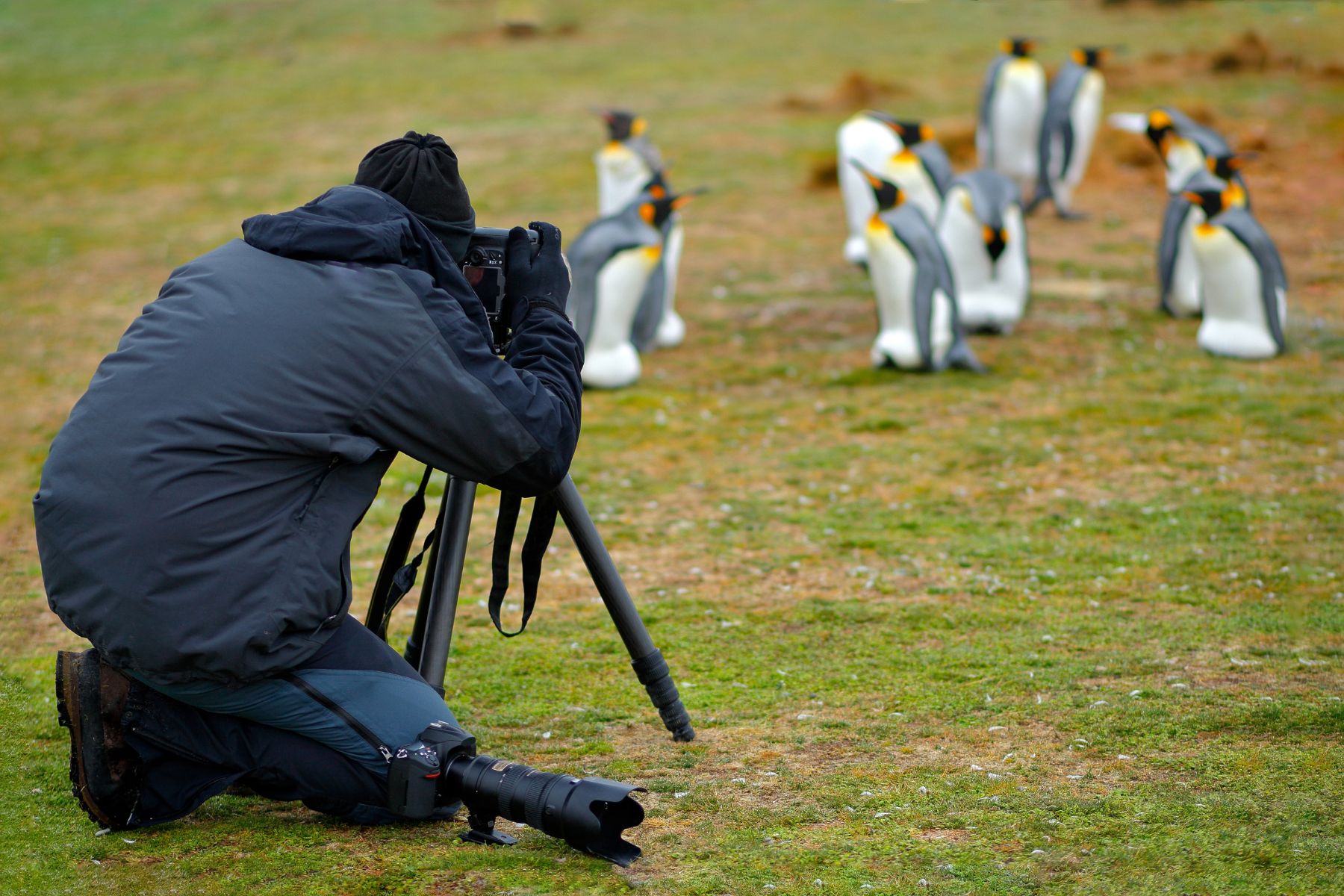
Tips on Watching Wildlife in South Georgia and Surrounding Islands
When you’re ready to appreciate South Georgia’s astonishing wildlife, we suggest the following tips to make sure you show your utmost respect towards the animals.
- Be mindful of their space: It’s crucial to keep a respectful distance from wildlife; this is the best way to avoid causing any unnecessary discomfort or alteration to their natural behaviours. After all, we’re the guests in their homes.
- Heed guides and signs: Your guide will detail the best times and places for wildlife sightings and give safety advice. Listen to it! Also, be sure to adhere to any signs indicating off-limits areas, this ensures safety for both you and our friends in the wild.
- Prioritise peace: Loud noises and abrupt movements can unsettle animals. Ensure you remain quiet and make only slow, predictable movements to allow animals to continue their activities undisturbed.
- Resist feeding wildlife: We must resist the urge to feed the animals, as this can lead to dependency, disrupt natural behaviours, or expose them to foods that could be harmful.
- Dress smart: South Georgia’s weather is unpredictable. Layering your clothes allows you to adjust to varying conditions. Don’t forget your waterproof clothing and sturdy footwear.
- Bring binoculars and a camera: A pair of binoculars will be your best friend when it comes to observing wildlife without getting too close. A camera equipped with a zoom lens will also come in handy for capturing unforgettable moments.
- Embrace leave-no-trace principles: Take only photographs and leave only footprints. This philosophy helps to conserve South Georgia’s environment for future generations to enjoy.
And remember, patience is a virtue when observing wildlife. You may not always get up close and personal or see immediate sightings, but just being in this unique environment is a great experience in itself.
More Information
Due to their proximity, there is a great deal of crossover between the wildlife of South Georgia and that of Anarctica – we recommend reading up on both!
Bradt’s Antarctica: A Guide to the Wildlife by Tony Soper is the most practical guide to the flora and fauna available for those ‘going south’.
